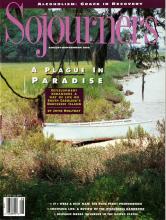At precisely 9 o'clock most Sunday mornings, 87-year-old Antonia Garza switches on the small television in her bedroom to attend Sunday Mass in Spanish. She and millions of Spanish speakers, many of them shut-ins like herself, tune in to La Misa, broadcast from San Fernando Cathedral in San Antonio. From the pulpit, the cathedral rector, Father Virgilio Elizondo, touches on countless themes and introduces visitors. These sometimes include presidential candidates and their families, showing the power of the broadcast.
Many U.S. Hispanics have been English-language television watchers as well. Garza's favorite entertainers have been the same as those of her Anglo contemporaries: Lawrence Welk, Jimmy Dean, Jane Wyman, and Dinah Shore, to name a few.
However, in addition to the Mass, Antonia watches novelas (soap operas) and news on the Spanish-language networks. Like Antonia, who could choose to tune in to English-speaking TV evangelists, other Hispanics seek comfort in the familiar.
Spanish-language communications media--radio, television, and newspaper--play an important part in the lives of Hispanics as a way to connect within the community. The media make it possible to gain greater understanding of the larger society's values and social mores. And they also provide a window through which to see how the rest of America sees the Hispanic community, if it sees it at all.
But these days there hasn't been much on the English-language networks in the way of family viewing, so Antonia's tuned into Univision or Telemundo, two Spanish-language networks with local affiliates.
Read the Full Article

